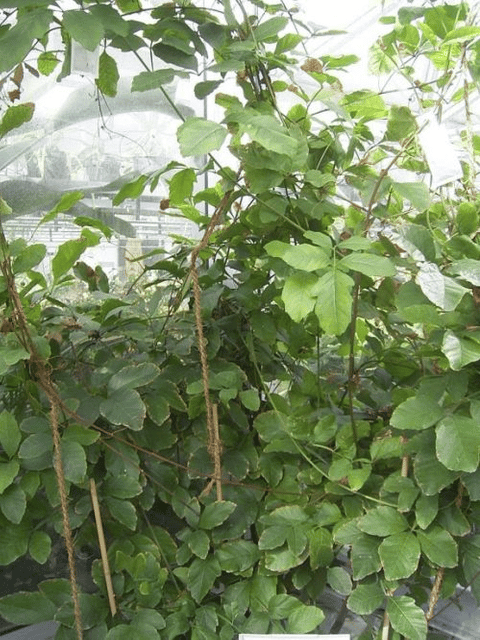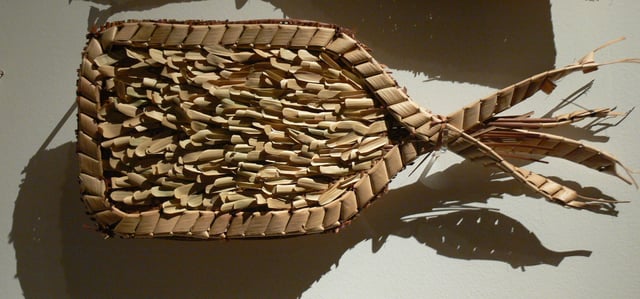Mawé people

Mawé people

| Total population | |
|---|---|
| 13,350 (2012)[1] | |
| Regions with significant populations | |
| Languages | |
| Sateré-Mawé, Portuguese[2] | |
| Religion | |
| Christianity |
| Total population | |
|---|---|
| 13,350 (2012)[1] | |
| Regions with significant populations | |
| Languages | |
| Sateré-Mawé, Portuguese[2] | |
| Religion | |
| Christianity |
Name
The name "Sateré-Mawé" comes from Sateré, meaning "caterpillar of fire", and Mawé, meaning "intelligent and curious parrot".[3]
They are also called Maué, Mawé, Mabue, Maragua, Sataré, Andira, Arapium.[2]
Language
The Mawé speak the Sateré-Mawé language, which belongs to the Tupian family. A grammar book was developed for the language in 1986.[2]
Initiation rites

Glove made of palm leaves, used in initiation rites (taken at the Museum of Ethnology in Vienna).
The Sateré-Mawé people intentionally use bullet ant stings as part of their initiation rites to become a warrior.[4] The ants are first rendered unconscious by submerging them in a natural sedative and then hundreds of them are woven into a glove made out of leaves (which resembles a large oven mitt), stinger facing inward. When the ants regain consciousness, the boy slips the glove onto his hand. The goal of this initiation rite is to keep the glove on for a full five minutes. When finished, the boy's hand and part of his arm are temporarily paralyzed due to the ant venom, and he may shake uncontrollably for days. The only "protection" provided is a coating of charcoal on the hands, supposedly to confuse the ants and inhibit their stinging. To fully complete the initiation, however, the boys must go through the ordeal a total of 20 times over the course of several months.